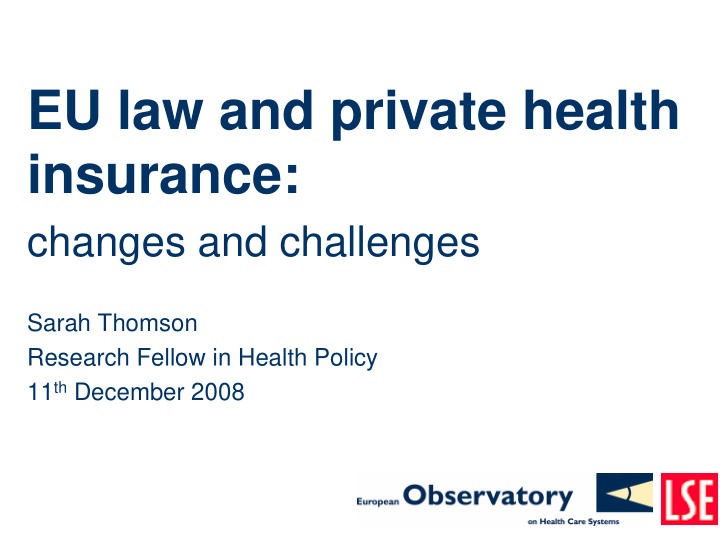



EU law and private health insurance: changes and challenges Sarah Thomson Research Fellow in Health Policy 11 th December 2008
What are the challenges? changes in EU law changes in private health insurance legal uncertainty
EU law: implications for regulation � liberalisation � solvency standards � no price or product controls � no differential treatment of insurers � limits to national non-financial regulation?
General good measures � open enrolment, community rating, lifetime cover � standardised benefits packages � risk equalisation among insurers � but only if private insurance is a “partial or complete alternative” to statutory insurance
What role for private insurance? PHI covers PHI role Examples People excluded or Substitutive Germany allowed to opt out Complementary Excluded services Netherlands (services) Complementary Statutory user charges France, Slovenia (user charges) Faster access and Supplementary Ireland, UK consumer choice
Does risk equalisation contravene EU law? � needed to correct market failures and ensure access to private insurance � yes (BUPA Ireland, state aid) � no (ECJ, services of general economic interest) � Slovenia? Netherlands?
Does differential treatment contravene EU law? � affects countries with mutuals � solvency margins � tax treatment � yes (ECJ, insurance directives, state aid)
Conclusions � does EU law limit national competence? � is it sufficient to protect consumers? � single market goals not achieved � legal uncertainty persists � insurance directives reflect the norms of the early 1990s
Recommend
More recommend